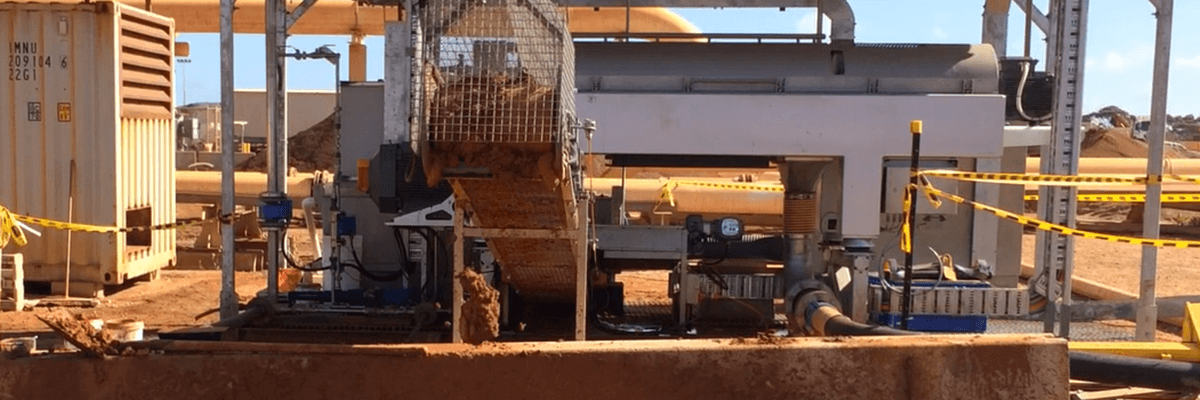
How to dewater tailings slurries with slimes and ultra-fines
Slimes and ultra-fines present a challenge to metallurgists and tailings engineers. Many have spent years thinking about alternative ways to store, process or dry this troublesome mining waste stream. The characteristic of many slimes streams can make tailings management, slurry storage and filtration very tricky.
What are slimes (in relation to minerals processing slurries?)
The term ‘slimes’ is used everywhere in minerals processing but the definition in relation to particle size distribution and mineralogy seems to vary depending on the mineral being mined and who is talking about it. As the name suggests, slimes consist of the fine solids fraction of slurries. To the touch, a pure slimes slurry feels “slimy” without the grit you feel when rubbing another slurry between your fingers.
I have consulted with several mineral processing experts on their experience and definitions. From these conversations, my understanding is that a slurry with a d50 of <10µm micron, and with a P80 of 45µm, would be considered a slimes stream. It often contains ultra-fine particles of the parent rock (e.g. quartz) and silts. It is also frequently associated with clays (aluminosilicates) such as kaolinite, smectite and illite. The surface charge and morphology of these clays combine with the small particle size to create a gluggy mess that does not consolidate well and is difficult to filter.
Slimes are sometimes a fraction of the tailings stream, combined with coarser solids, or a product of a desliming stage. The higher this fraction, the more difficult the tailings are to manage.
What are the tailings disposal options for slimes?
Traditionally, slimes have been stored in large tailings dams or sent to solar drying cells. Newer methods have evolved which reduce the slurry volume through improved methods of thickening both in the process plant and consolidation at the disposal area. However, these all require a slurry discharge and containment in a dedicated area. Real estate, dam building and running costs, along with environmental approvals and risks are associated with this.
Valuable water is also lost through evaporation rather than directly recycling it to the process plant or water storage dam.
Many mining companies are now investigating alternatives to tailings slurry storage for cost, compliance and environmental reasons. Dry stacking is gaining in popularity, and it is great to see several technologies rising to the challenge. However, feedback from many process engineers I meet indicates that slimes with a high clay content are an obstacle to the various methods of filtration (be it gravity, vacuum or filtration).
While filtration can struggle with clay, a gravity-based method such as a thickener commonly separates out the water and solid phases with the assistance of flocculent. They create an overflow that is normally clear enough for use in the process plant, and a pumpable underflow. Logic suggests that artificially increasing the gravitational (G) force will achieve an even better solid-liquid separation result in a shorter time frame.
Decanter (solid bowl) centrifuges achieve separation at this higher G force (over 1000G) via rotation of a bowl. Unlike filtration, the liquid phase is not passing through a cloth or screen. Similar to a thickener, flocculent is required to assist with separation. However, the high G force and internal screw conveyer to remove the high shear strength centrifuge ”underflow” means the cake has far lower moisture than the thickener underflow.
The target is to achieve cake that is suitable for transport and water clean enough for recycling. This can be achieved with slimes in a decanter (solid bowl) centrifuge) – even those with high clay content.
A lot has advanced in the last 20 years with decanter (solid) bowl centrifuges which make them a practical solution for slimes and other tailings slurries. This includes a high capacity, wear protection and internal geometry specially designed to be suitable for a tailings service.
All of this means that a tailings slurry containing slimes can be dewatered and transported to a disposal area that is unsuitable for a slurry. You don’t need to send a slimes slurry a tailings dam or solar drying cell, and you can use that recovered water.
About the author
|
Paul Tuckwell Mining & Minerals Key Account Manager Alfa Laval Australia Paul is a Chemical Engineer with more than 22 years of experience in the fields of heat transfer, solid-liquid separation technologies and associated process engineering. He is based in Perth, Western Australia and is involved in minerals processing projects from conceptual stage to testing to final commissioning and beyond. Paul has a particular interest in sustainable tailings management and specialises in solid bowl centrifuges as a solution to dewater and stack solid cake instead of sending a slurry to a tailings dam. |
